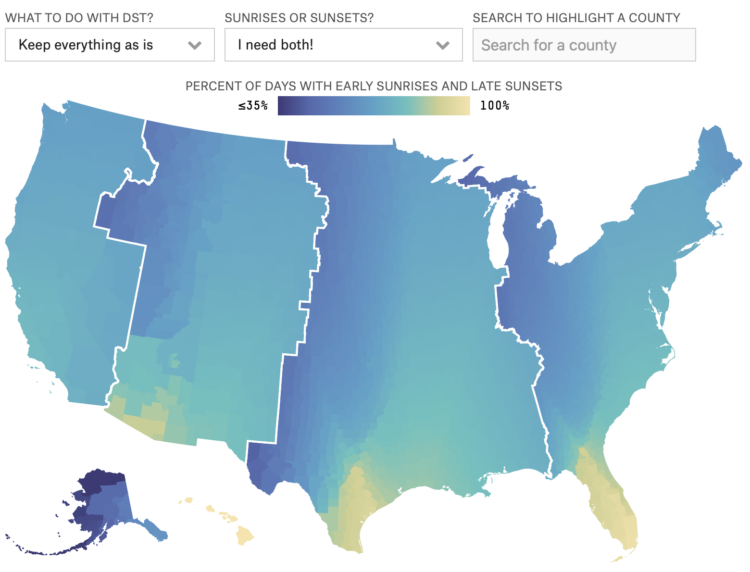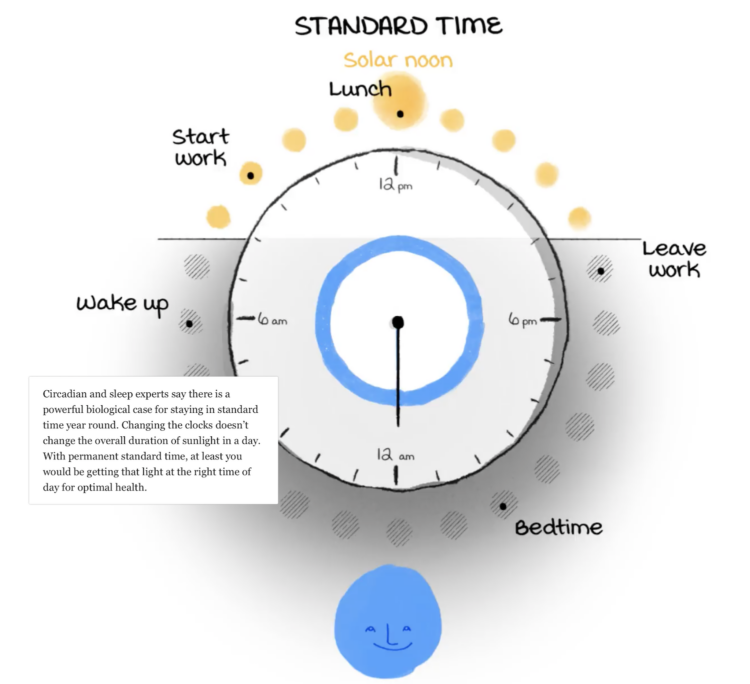We like to complain about changing time an hour back or forward, and usually it’s in the context of our own geography. Maybe one area gets a lot of later sunsets, but then another gets much less. FiveThirtyEight made a map that lets you put in your preference to see how the rest of the country is affected:
Unfortunately, no solution will make every American happy. Even if you’ve found a combination that satisfies your personal preferences, you may have noticed that those preferences could negatively impact other parts of the country. And advocates for changing the system we currently have — whether for or against DST — feel strongly that their personal preference is the best.
We all know the solution here. Everyone gets to sleep, wake, and work whenever they want. Easy.
Tags: daylight saving, FiveThirtyEight





